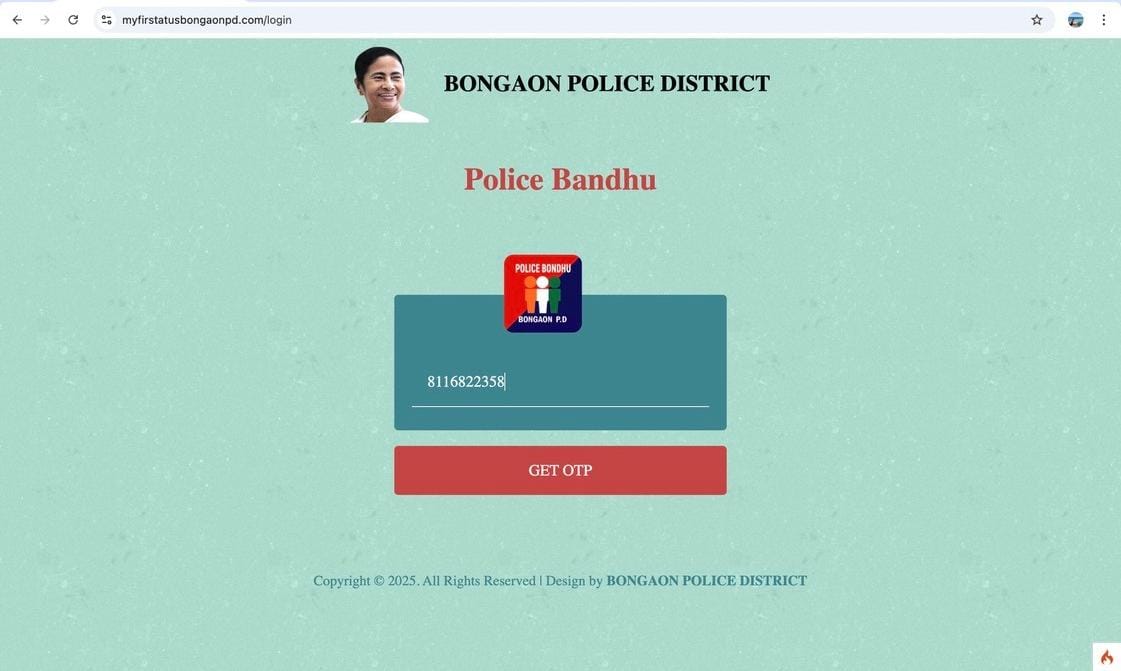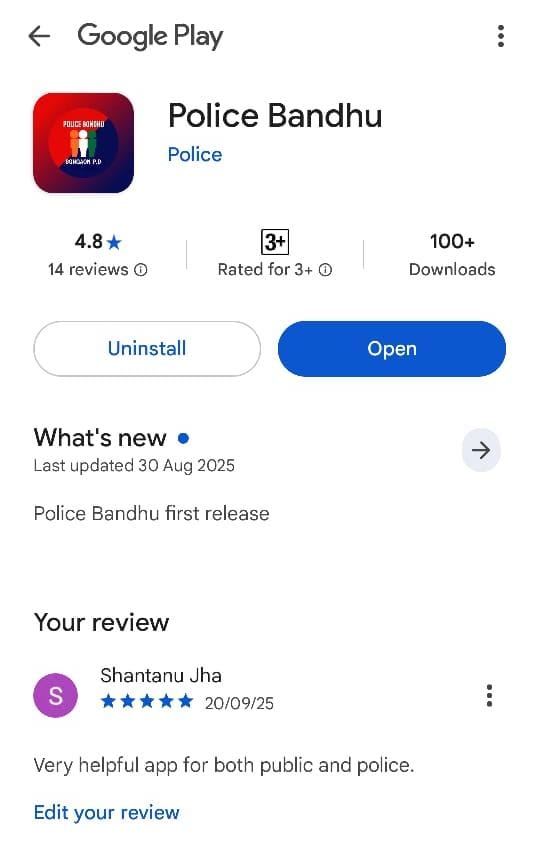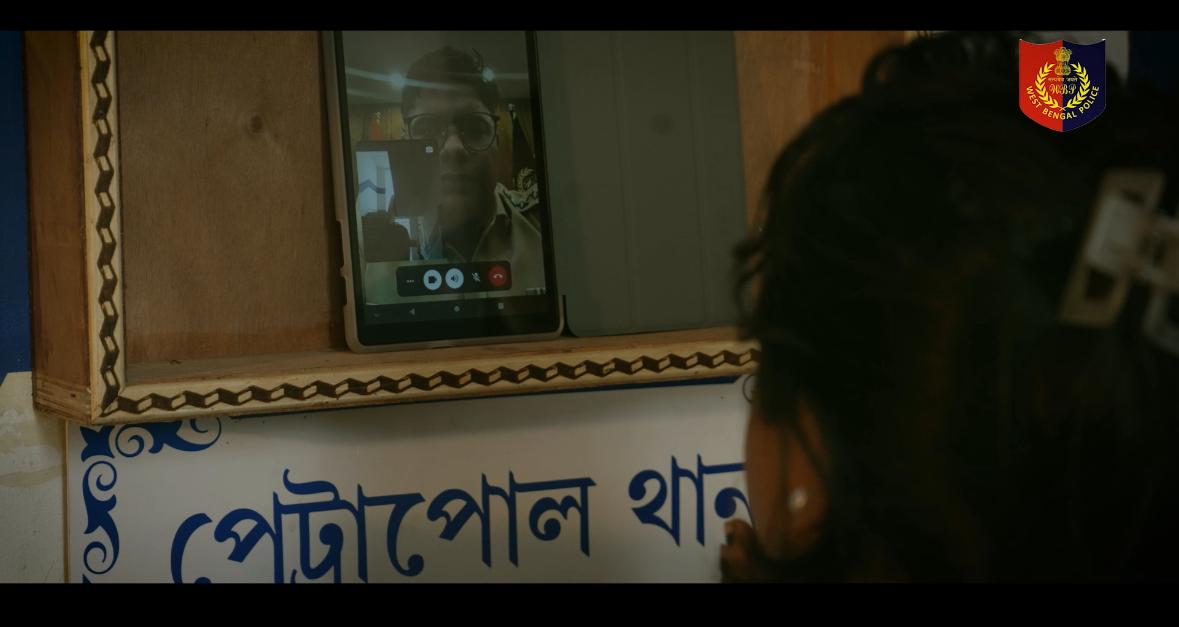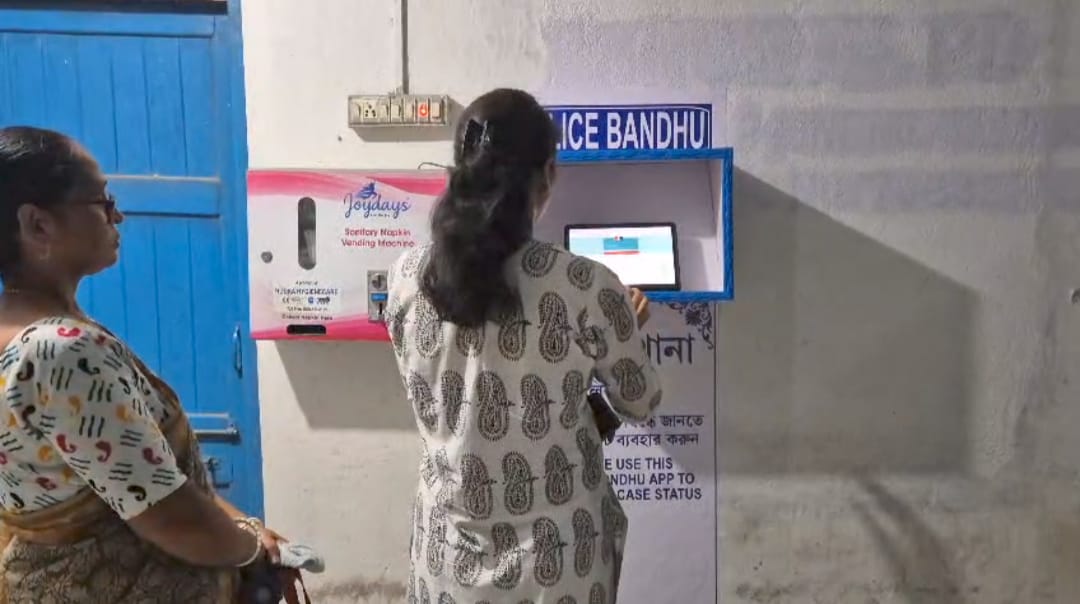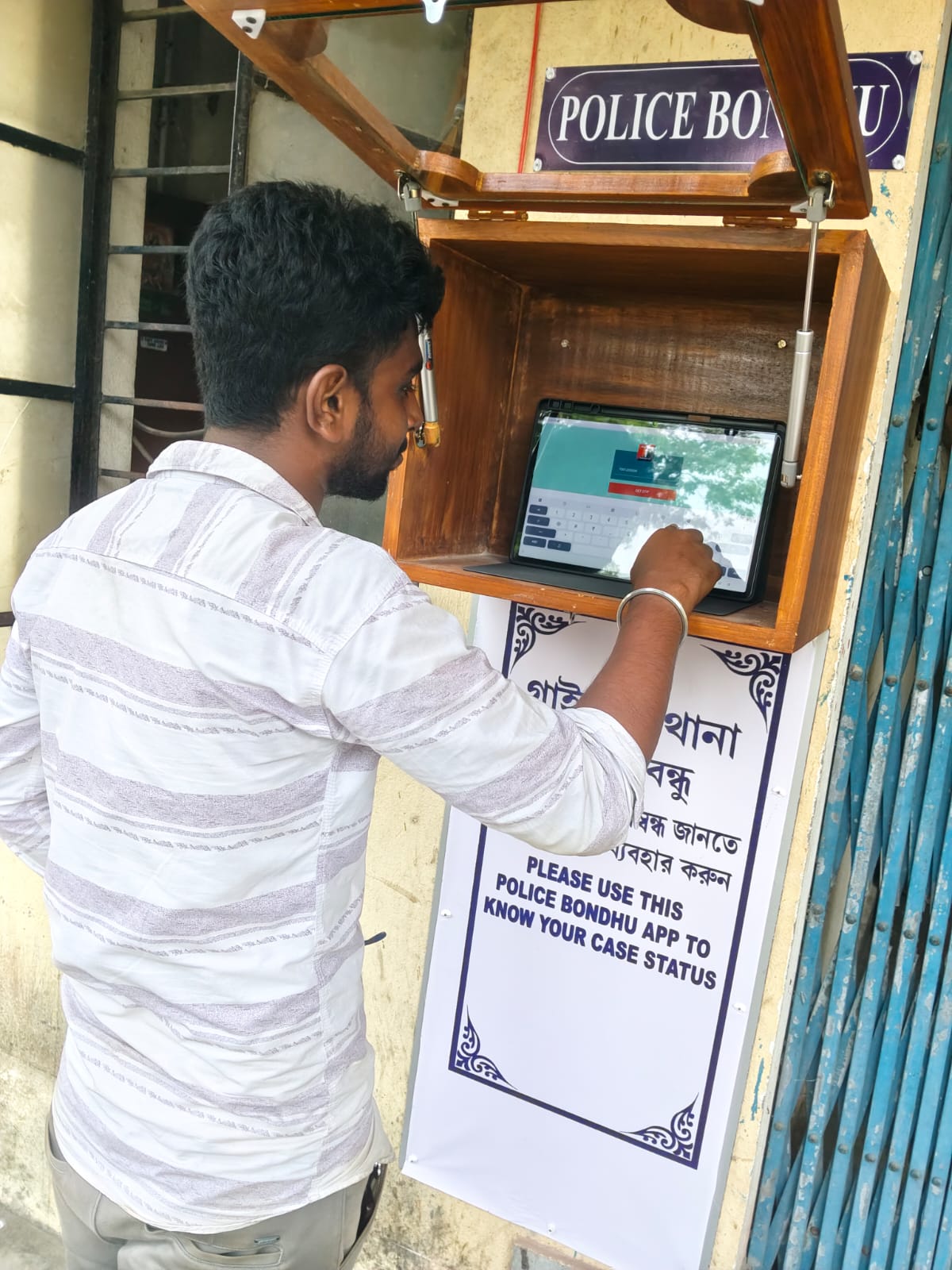Police Bondhu – Bongaon Police District

Police Bondhu
Problem
- Limited transparency and accountability in police investigations, leading to trust deficits.
- Citizens lacked a direct and simple way to track the progress of their FIRs.
- Absence of a structured, role-based digital workflow for police personnel.
- Need to upload and manage ~5,000 case records every year efficiently.
- High dependency on manual processes, increasing delays and redundancies.
Solution
- Conducted stakeholder consultations with citizens and officials to identify pain points.
- Defined key functionalities like user registration, grievance submission, and case tracking.
- Developed real-time tracking and notification systems for both citizens and officers.
- Created a multilingual, user-friendly web interface ensuring accessibility across demographics.
- Established dashboards and supervisory control mechanisms for senior officers.
Outcomes
- Automated workflows and real-time tracking accelerated the resolution of citizen grievances.
- Average grievance processing time was significantly reduced.
- Improved citizen satisfaction due to transparency and responsiveness.
- Enhanced accountability among investigating officers via dashboard-driven supervision.
- Built citizen trust by enabling remote FIR tracking without visiting police stations.
Challenges
- Many rural end-users had limited experience with digital systems.
- Poor internet connectivity in certain remote parts of the district.
- Initial resistance among some staff to shift from manual to digital workflows.
- Awareness gaps among citizens about the new system required campaigns.
- Ongoing need to ensure long-term maintenance, cybersecurity, and scalability.
Innovations
- First-of-its-kind integrated district police management system in West Bengal.
- Role-based access ensures secure handling of sensitive case data.
- Lightweight coding optimised for low-connectivity areas, ensuring inclusivity.
- Emphasis on supervisory oversight with real-time dashboards for SP-level monitoring.
- Future-ready vision including mobile app integration and state-level database linkage.
SKOCH Award Nominee
Category: Police – Police & Safety
Sub-Category: e-Governance – Digital Service Delivery
Project: Police Bondhu
Start Date: 01-01-2025
Organisation: Bongaon Police District
Respondent: Mr. Dinesh Kumar
https://myfirstatusbongaonpd.com/
Level: Premium Star
Video
See Presentation
Gallery
Case Study
Police Bondhu – A Citizen-Centric Digital Policing Initiative in Bongaon Police District
The Bongaon Police District in West Bengal launched an innovative initiative called Police Bondhu on 1st January 2025 to address long-standing challenges in transparency, accountability, and citizen engagement. Traditional policing in the district was heavily dependent on manual systems, which resulted in delays, redundancies, and inefficiencies. Citizens had no straightforward way to track the progress of their First Information Reports (FIRs) and often had to visit police stations in person to seek updates. At the same time, police officers faced the difficulty of handling around 5,000 cases annually without a structured digital framework. These challenges created trust deficits between the public and the police, highlighting the need for a citizen-friendly, technology-driven solution.
The vision for Police Bondhu was to establish an integrated district police management system that would empower both citizens and police personnel. The Superintendent of Police spearheaded the project with a clear goal: to create a unified digital platform that bridged the communication gap between the force and the public while introducing accountability at every stage of case management. Planning for the project began with detailed consultations with stakeholders. Citizens, community leaders, and police officers at multiple levels were engaged to identify pain points and suggest requirements. The outcome of these discussions emphasised the need for an easy-to-use, multilingual platform that could serve digitally literate individuals as well as people with limited exposure to technology.
The design of the system placed equal emphasis on accessibility for citizens and efficiency for the police. Citizens were given the ability to register grievances, submit complaints, and track FIRs online without visiting police stations. On the other hand, investigating officers were provided with structured workflows that replaced many manual processes, while senior officers received dashboards that allowed them to supervise progress in real time. This role-based access structure not only improved efficiency but also ensured data security and privacy, with strong safeguards such as encrypted communications, secure login protocols, and regular audits.
Implementation of Police Bondhu followed a phased approach. The initial stages involved designing the core functionalities and ensuring compatibility with the existing IT infrastructure. Once the software was developed, it underwent rigorous testing to address possible technical issues and optimise performance for low-connectivity environments. Training programs were conducted for police personnel, many of whom were accustomed to manual systems, to help them transition smoothly to the new digital platform. In parallel, citizen awareness programs were rolled out to ensure that people, especially in rural areas, were aware of the benefits and knew how to access the system. The district-wide rollout followed, with all police stations adopting the platform and integrating it into their daily operations.
The outcomes of the project were immediate and measurable. Automated workflows significantly reduced redundancies and delays, while real-time tracking ensured that grievances and FIRs could be monitored continuously. The average grievance processing time dropped sharply, which in turn improved citizen satisfaction. Supervisory dashboards empowered senior officers to intervene in cases showing delays or irregularities, thereby improving accountability among investigating officers. Citizens, for the first time, could track their cases remotely, reducing the need for repeated visits to police stations. This enhanced both efficiency and public trust, as people felt more connected and informed about the progress of their complaints.
One of the standout features of Police Bondhu was its innovative approach to inclusivity. Recognising the limitations of internet connectivity in some parts of the district, the system was designed with lightweight coding and optimised load times, ensuring smooth operation even in low-bandwidth conditions. Its multilingual interface catered to diverse citizens, making it easier for them to navigate the platform regardless of their educational background. Moreover, the emphasis on supervisory oversight gave the initiative a distinctive edge, ensuring that accountability was not just a theoretical goal but a day-to-day operational reality.
Despite its successes, the project faced several challenges during implementation. Many rural citizens had limited familiarity with online systems, which initially restricted adoption. Connectivity issues in remote areas also posed barriers. Some police personnel, accustomed to traditional paper-based methods, were reluctant to switch to digital workflows. These hurdles required continuous awareness campaigns, training sessions, and hands-on support. The project team worked to address these issues by conducting digital literacy workshops for citizens, organising training programs for officers, and ensuring that awareness about the platform spread through community engagement.
The scale of impact achieved by Police Bondhu is noteworthy. Within months of its launch, it engaged over 1.5 million external beneficiaries and 2,500 internal users, covering nearly the entire district’s population and police force. Citizens welcomed the opportunity to access services online, while officers benefited from structured workflows that made their jobs easier. Trust in the police improved, largely because of the transparency and accountability the platform brought to everyday interactions.
The initiative also positioned itself as a future-ready solution. Plans are already in place to develop a dedicated mobile application that would further increase accessibility for citizens. Integration with state and national crime databases is also envisioned, enabling holistic law enforcement across multiple jurisdictions. Advanced analytics tools are being considered to help identify investigation bottlenecks, optimise resource allocation, and predict case trends, further strengthening the system’s capability. Regular system updates, cybersecurity audits, and ongoing training modules are part of the sustainability roadmap to ensure that the platform remains effective in the long run.
Lessons learned from the project highlight the importance of combining technology with trust-building. The emphasis on privacy and secure handling of sensitive citizen data proved crucial in gaining acceptance. Phased implementation helped mitigate risks and allowed for adjustments along the way. Most importantly, the initiative demonstrated that citizen engagement is vital to the success of digital governance. By involving community members early in the design process and continuously gathering feedback, the project was able to deliver a solution that truly addressed public concerns.
In conclusion, Police Bondhu represents a landmark in the journey of citizen-centric digital policing in West Bengal. It successfully tackled systemic challenges of transparency, accountability, and efficiency by leveraging technology while keeping citizens at the centre of its design. The initiative has improved grievance redressal, reduced delays, enhanced trust in policing, and introduced a scalable model that can be replicated in other districts. It embodies the principles of e-Governance by ensuring that technology serves as an enabler of empowerment, trust, and efficiency
For more information, please contact:
Mr. Dinesh Kumar at spbongaonpd@gmail.com
(The content on the page is provided by the Exhibitor)

